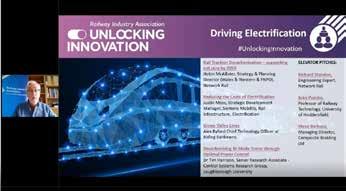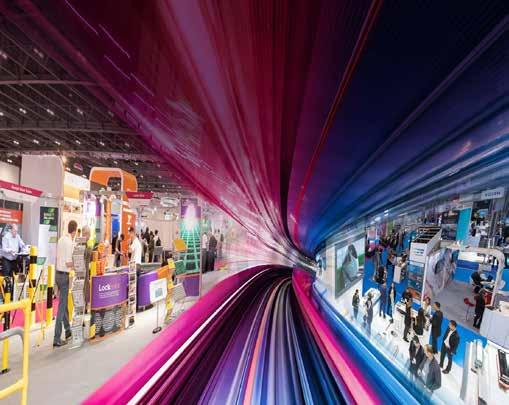
8 minute read
News
Editor David Shirres david.shirres@railengineer.co.uk
Production Editor Nigel Wordsworth nigel.wordsworth@railengineer.co.uk
Production and design Adam O’Connor adam@rail-media.com Matthew Stokes matt@rail-media.com
Engineering writers bob.wright@railengineer.co.uk clive.kessell@railengineer.co.uk collin.carr@railengineer.co.uk david.bickell@railengineer.co.uk graeme.bickerdike@railengineer.co.uk grahame.taylor@railengineer.co.uk lesley.brown@railengineer.co.uk malcolm.dobell@railengineer.co.uk mark.phillips@railengineer.co.uk paul.darlington@railengineer.co.uk peter.stanton@railengineer.co.uk stuart.marsh@railengineer.co.uk
Advertising Asif Ahmed Chris Davies Craig Smith asif@rail-media.com chris@rail-media.com craig@rail-media.com
Rail Engineer Rail Media House, Samson Road, Coalville Leicestershire, LE67 3FP, UK. Switchboard: 01530 816 444 Website: www.railengineer.co.uk
Rail Engineer Videos http://rail.media/REYouTube
Editorial copy to Email: news@rail-media.com
Free controlled circulation Email: subscribe@rail-media.com
The small print Rail Engineer is published by RailStaff Publications Limited and printed by PCP Ltd.
© All rights reserved. No part of this magazine may be reproduced in any form without the prior written permission of the copyright owners.
Part of:
Railtex/Infrarail postponed until September 2021
The UK's major railway industry exhibitions, Railtex 2021 and Infrarail 2021, have been postponed to 7-9 September 2021.
The co-located events were scheduled to take place from 11 – 13 May 2021 at the NEC Birmingham.
The announcement by organiser Mack Brooks Exhibitions follows the postponement of Infrarail earlier this year, which was rescheduled to be colocated with Railtex 2021 following the ongoing COVID-19 crisis globally. The two exhibitions have been organised in alternating years since the launch of Infrarail 25 years ago; the decision to colocate Railtex and Infrarail was taken to maximise the potential of both events by gathering the whole industry under one roof at the same time.
“After closely monitoring the situation around COVID-19 and the associated restrictions currently in place, we have been able to secure an alternative slot to hold Railtex & Infrarail in September 2021,” said Nicola Hamann, managing director of Mack-Brooks Exhibitions, about the announcement.
“Whilst the decision to postpone the event was not taken lightly, our number one priority is to set up the correct framework and planning security for the UK rail industry. This includes setting up extensive measures to do everything we can to ensure the safety and wellbeing of everyone involved.
“Our aim is to provide the railway industry with the marketplace it needs to recover from this crisis quicker and stronger.
The Railtex and Infrarail team will communicate closely with customers and partners over the coming weeks and months and thank their exhibitors, partners, suppliers and visitors for their support during this time.
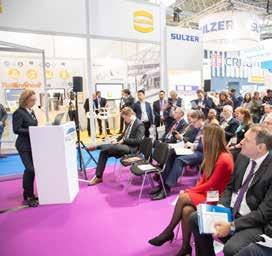
feasibility on three more main lines
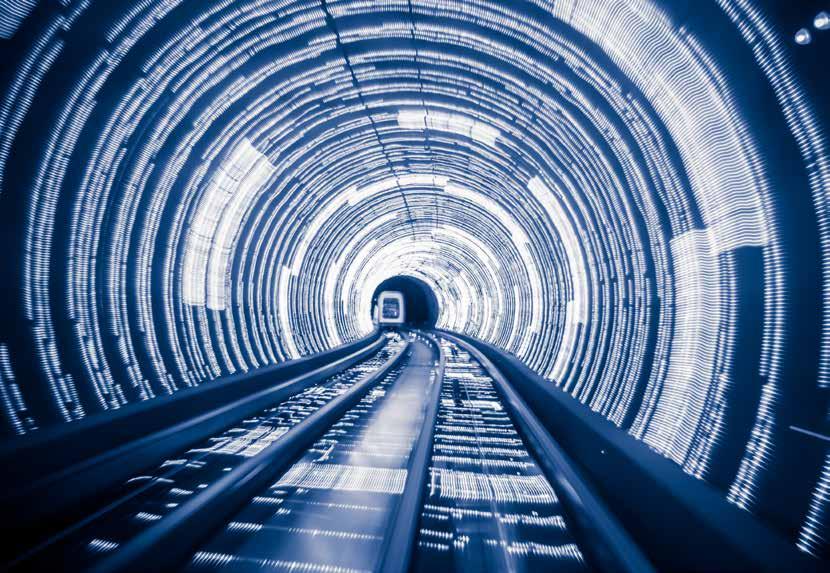
Rail Minister Chris Heaton-Harris has announced £1.2 million of new government funding to accelerate feasibility work for digital signalling on vital sections on the West Coast main line, Midland main line and East Anglia route, inculding Peterborough to Kings Lynn on the Anglia route, and in the Warrington and Wigan area on the West Coast main line North.
The new funding will be used to identify the most effective way to apply this type of technology to the railway and new way of working, capitalising on early engagement with the supply chain, and creating further opportunities to encourage innovation and drive efficiencies across regions.
Learning from the recent experience of the East Coast Digital Programme, where a partnership with route-based operators has been a success, this early scoping work will lay the foundation for future digital signalling renewals, as part of a wider national plan to introduce digital signalling across the rail network in Great Britain.
Rail Minister Chris Heaton-Harris said: “We’ve come a long way since the era of metal levers, used by Victorian signallers to provide safe passage for trains rolling into and out of stations. Now it’s our turn to be modern transport pioneers as we build the railway of tomorrow.
“Today’s investment brings forward early investigation work with Network Rail engineers and suppliers on how best to roll out digital signalling across the rail network, reducing delays and improving safety in the long term.
“Our ambitious programme to modernise Britain’s rail network will support the supply chain by creating high-skilled jobs and boosting the economy, as we level up the country and build back better after COVID-19.”
Conventional signalling means the network can struggle to recover quickly following disruption with a small delay on one part of the railway still causing knock-on delays hundreds of miles away on other parts of the network, many hours later.
This new technology gives signallers much better real-time information about train movements, enabling them to communicate with train drivers continuously to reduce the impact of delays.
Work is already underway on a £350 million investment in the East Coast Digital Programme, which will introduce digital signalling on the East Coast main line between London King’s Cross and Stoke Tunnel in Lincolnshire.

Structural Precast for Railways
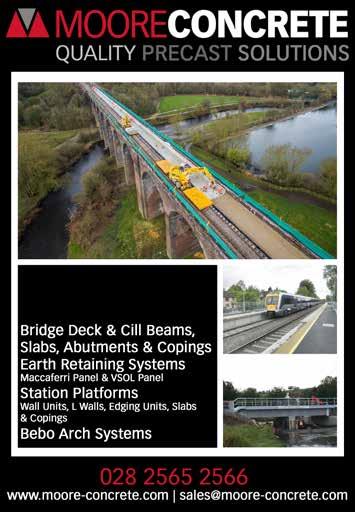
Gypsy Patch Lane underbridge, between Bristol and South Wales on the Great Western main line, is a crucial link between the Cribbs Causeway Regional Retail Centre, Bristol Parkway station and Bristol City centre. Originally a narrow and low brick arch, completely incapable of taking the anticipated traffic, it is being replaced by a much wider structure with enhanced headroom.
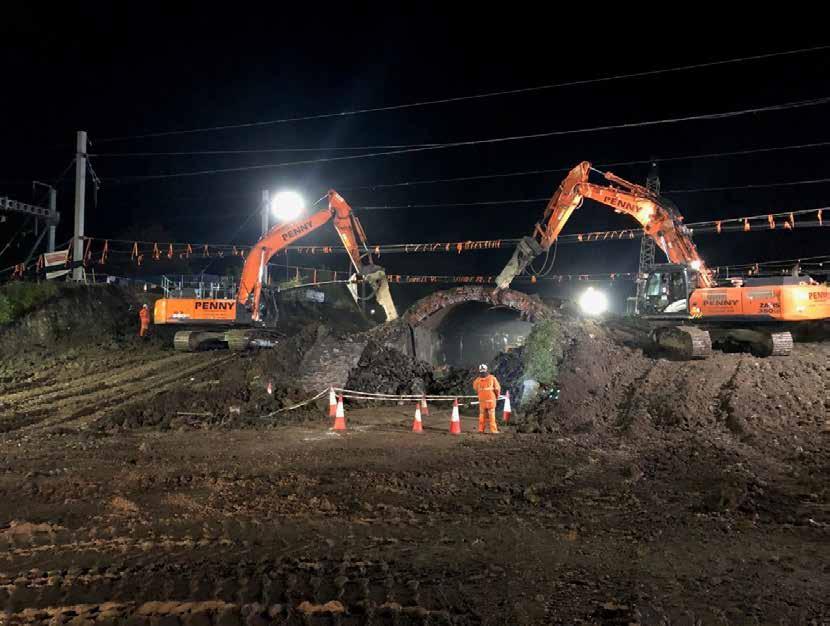
The tracks of the main line above carry an intensive passenger service through the Severn tunnel and to South Wales – at least they do when the nation isn’t being locked down - along with freight that is less affected by current restrictions.
The installation of the new bridge, complete with abutments, involved it being constructed in an adjacent compound and then moved to its final position on heavy duty transporters known as SPMT (self-propelled modular transporter) axles. These are self-contained, self-propelled units that have hydraulically linked support points. They are used in many heavy transportation applications, often involving several thousand tonnes.
The main bridge structure was completed by midOctober ready for its journey from the compound to its final position. At 4,260 tonnes, the exercise was billed as the heaviest of its kind ever undertaken in the UK.
The brick arch was demolished in the early hours of Tuesday 27 October and the embankment excavated to take the wider structure. After piling works in the area of the bridge foundations were completed, the bridge move started on Friday morning, 28 October.
The journey from the compound to within 20 or 30 metres of the railway began steadily but came to a halt short of its final destination. Local press sources have said that the SPMT axles settled in soft ground conditions, but the cause of the prolonged interruption is now being investigated by Network Rail, its main contractor and subcontractor.
Over the following days, efforts were made to take the bridge back to firmer ground and to release the SPMT axles – some of which had been damaged - from under the structure so that remedial work could be undertaken.
By 14 November, the bridge was able to complete its journey and it is now in its planned final position. The tracks have been replaced, along with overhead line and signalling cables, and the railway finally reopened on the morning of Monday 23 November, sixteen days later than planned.
Rail Engineer will be following developments over the coming weeks to help the industry learn from the problems encountered at Gypsy Patch Lane and what impact this may have on a commonly used method of heavy transportation on the railway.

Funding approved to finish Crossrail

Funding and financing for the final phase of the Crossrail project has been agreed by the Mayor of London, Transport for London (TfL), the Department for Transport (DfT) and HM Treasury, so work on the railway can continue at pace.
Crossrail announced in August that it expected the Elizabeth line to open through central London in the first half of 2022 and that it would require funding beyond the agreed funding envelope.
The shortfall will initially be covered by the Greater London Authority (GLA) borrowing up to £825 million from the DfT, which will be given by GLA to TfL as a grant. The GLA will repay this loan from Business Rate Supplement (BRS) and Mayoral Community Infrastructure Levy (MCIL) revenues.
Crossrail is continuing to work hard to reduce its funding shortfall, and TfL is ensuring that further independent analysis of costs is carried out.
The Mayor of London, Sadiq Khan, said: “Securing this financing package enables us to press full steam ahead with getting the central section of the Elizabeth line open as soon as possible. The government have insisted London must pay the shortfall – despite the overwhelming majority of the tax income that will result from Crossrail going to the Treasury. This is another example of London supporting the country way over and above the help we get from this government. I do not want this project to be stalled so it is vital that we dig deep to get the railway up and running. I will continue to monitor progress closely and do everything I can to minimise costs - helping ensure London and beyond can enjoy its many benefits sooner rather than later.”
Secretary of State for Transport Grant Shapps said: “The government remains committed to the rapid completion of the project, in a way that is fair to UK taxpayers, and has committed to financing the completion of Crossrail. However, London - as the primary beneficiary – must ultimately bear any additional costs. Crossrail Ltd is committed to reducing its funding shortfall and will take all necessary steps to complete the project without requiring further additional funding. TfL is ensuring that further independent analysis of costs is carried out.”







